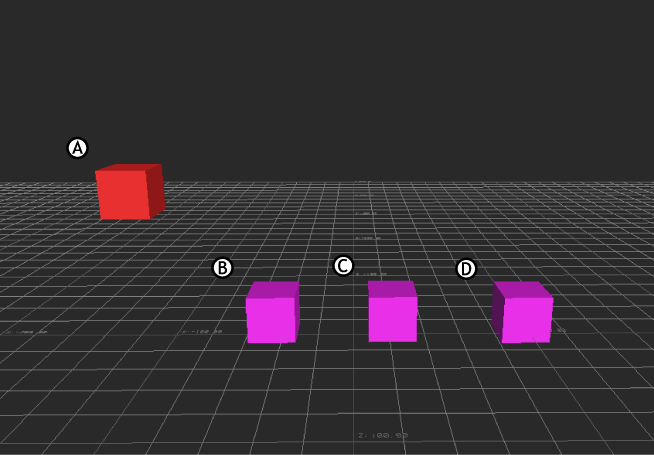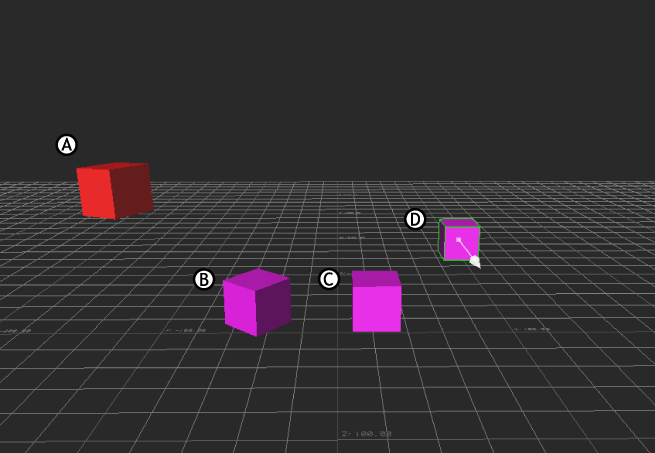The 3 Points constraint is a rotations constraint where the position of three objects is used to constrain the rotation of another object.

3 Points constraint
When you perform optical motion capture, only the translation of each sensor is captured. Optical sensors do not send rotation information.
However, the rotation of a limb, for example, can be derived based on the translation of three sensor positions. For more on Optical motion capture, see Optical motion data.
When you first activate or snap the Rotation From 3 Points constraint, it aligns the constrained object’s X-axis with the vector defined by the Origin and Target sources. The constraint then attempts to align the Y-axis of the constrained object to point towards the Up source.

3 Points constraint A. Constrained object B. Up source object C. Origin source object D. Target source object.
In the following graphic, the cube A is the constrained object. When you move any of the three cubes (the sources) after the constraint is active, the X, Y, and Z rotation of the constrained object changes.

3 Points constraint activated: Translating B, C, and D rotates the constrained object (A) in various directions.